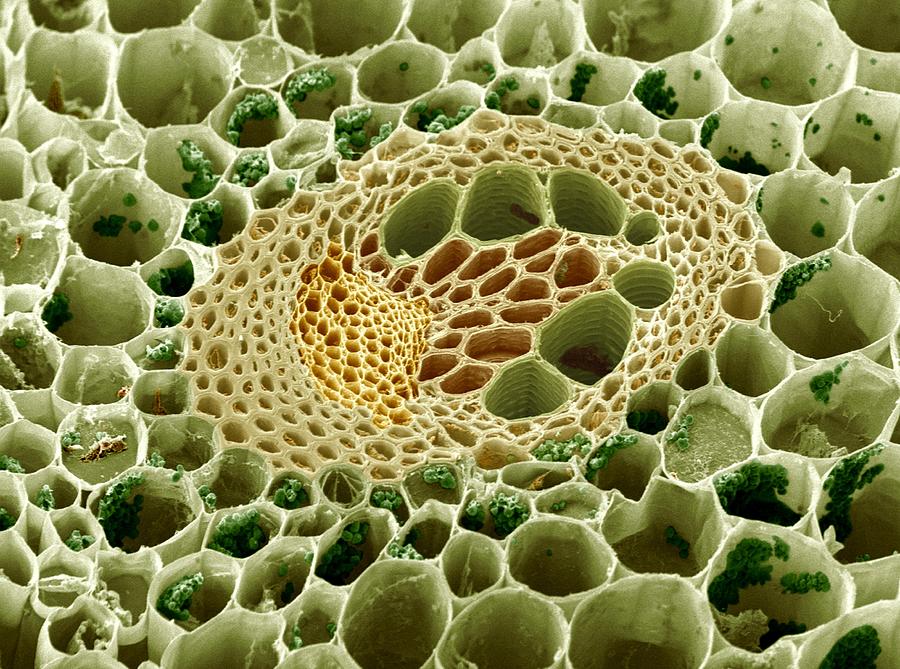Learning Objectives
- Identify the functions of vascular tissue (xylem and phloem)
- Identify the plant groups that have vascular tissue
- Identify some of the structures (stomata and root cortex) that facilitate water uptake
- Describe the three forces that move water up the xylem
Powerpoint: Vascular Tissue
Because land plants no longer live in an aquatic environment where nutrients, water and nutrients are easily accessible from the environment, land plants must develop some structures that help to conduct all these essential ingredients. One of these evolutionary breakthroughs is vascular tissue.
Vascular tissue are specialized tissues in plants that help to conduct water, nutrients and sugars around to the parts of the plant that need it. They exist in ferns, gymnosperms and angiosperms. There are two types of vascular tissue:

Xylem
- Carry water and nutrients
- Carry their material upwards from the ground to the leaves of the plant
- Made up of tracheid cells that have died
Phloem
- Carry sugars
- Carry their material downwards and upwards, though mainly downward, from the leaves to the rest of the plant
- Made up of live cells with interconnected cytoplasm
But how does water move up into the plant though? Remember, water has no obligation to just move into the plant, so what mechanism do plants have to “suck” water into themselves?
There are three mechanisms that help with that:
- Capillary Action
- Root Pressure
- Transpiration
Capillary action: because water molecules are polar, each single water molecule is attracted to other water molecules. This creates cohesive forces between water molecules and other surfaces that cause water to be rise upwards in narrow spaces. However, because capillary action itself is a weak force, it alone cannot account for how water is able to move up plants.

Root Pressure: Roots also help water to move into the xylem by uptake of nutrients. First of all, let’s backtrack and think about osmosis.

Osmosis dictates that water will always move towards areas of higher solute concentration. Remember, solutes are anything, particles, that are dissolved in water. Concentration is not how much particles there are in the water, but more like how tightly the water are packed together. Therefore, in a beaker, with a semipermeable membrane where only water can go through, water will travel towards the area where the particles are more packed together.
To remember this, imagine that these solute particles were people packed in a room. Water will always travel towards the area where people are more packed together. This provides them with more room to move around in.
Roots take advantage of osmosis by moving nutrients into itself. While the cortex cells of roots cannot actively move water into its tissues, it can actively take in nutrients from its surroundings. By collecting nutrients, it creates a higher concentration of nutrients inside itself. Because of osmosis, the water will then naturally flow into the roots and into the xylem.
The rushing of water into the roots creates what is called root pressure. But even this is not enough to move water all the way up into a tall tree. There must be something else that moves water.
Transpiration: When you breathe out on a cold day, you’ll notice that a mist escapes into the air. This is the water particles from your breathe evaporating.
Did you know plants can do this too? Of course they don’t breathe the same way that people do, but they do have pores that expel water. These little pores are called stomata. They are like little holes on the underside of leaves. When they open and close, they take in carbon dioxide, and expel water to evaporation.
When the water evaporates off of leaves through the stomata, water will be pulled up from the soil, like drinking from a cup of water through a straw.

